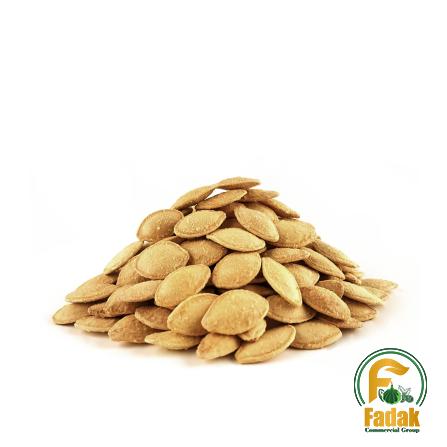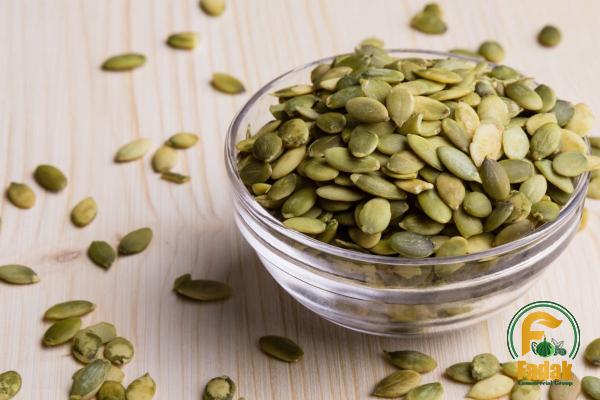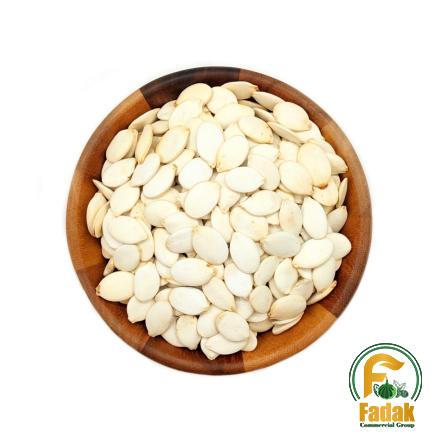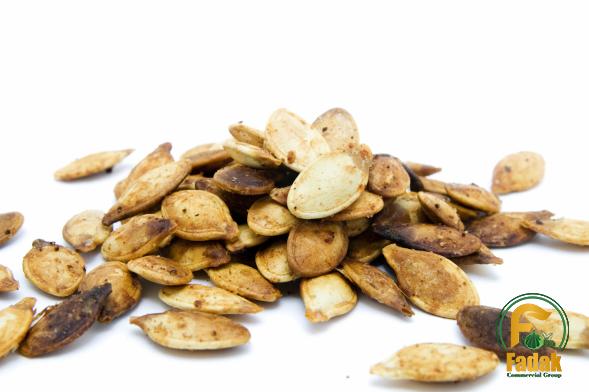Raw almonds are among the most popular and versatile nuts consumed worldwide. Widely regarded as a healthy snack, they are packed with essential nutrients, making them a great addition to a balanced diet. This article explores the nutritional benefits, culinary uses, and potential health effects of raw almonds. Nutritional Value: Raw almonds offer a range of essential nutrients, including healthy fats, protein, fiber, vitamins, and minerals. They are particularly rich in monounsaturated fats, which have been linked to heart health. Almonds are also an excellent source of vitamin E, manganese, magnesium, and phosphorus. Additionally, they contain significant amounts of protein, making them an ideal choice for vegetarians and vegans. Health Benefits: Including raw almonds in one’s diet can have numerous health benefits. Some of the key advantages of consuming raw almonds include: 1. Heart Health: The high monounsaturated fat content in almonds is beneficial for heart health. Regular consumption of almonds has been associated with reduced cholesterol levels, inflammation, and improved cardiovascular function. 2. Weight Management: Despite being relatively high in calories, almonds’ nutrient density and fiber content make them a satisfying and nutritious snack. Research suggests that incorporating almonds into a balanced diet may help with weight management by promoting feelings of fullness and reducing overall calorie intake. 3. Blood Sugar Control: Almonds have a low glycemic index, meaning they cause a slower rise in blood sugar levels compared to many other foods. This can be beneficial for individuals with diabetes or those looking to maintain stable blood sugar levels. 4. Bone Health: Almonds contain several essential minerals, including magnesium, phosphorus, and calcium, which are vital for maintaining healthy bones and teeth. Adequate intake of these minerals contributes to improved bone density and reduced risk of osteoporosis. 5. Skin Health: The vitamin E content in almonds contributes to healthy skin by protecting against oxidative damage caused by free radicals. These antioxidants help maintain skin elasticity, prevent premature aging, promote wound healing, and reduce the risk of skin diseases. Culinary Uses: Raw almonds are incredibly versatile in the culinary world and can be enjoyed in various forms. Some popular uses include: 1. Snacking: Raw almonds make for a convenient and nutritious snack option, whether enjoyed on their own or mixed with dried fruits or other nuts for a homemade trail mix. They provide a satisfying crunch and can be easily packed for on-the-go consumption. 2. Baking: Almonds add flavor, texture, and nutritional value to baked goods. Ground almonds, known as almond meal or almond flour, are often used as a gluten-free alternative in recipes for cakes, cookies, and bread. 3. Cooking: Adding raw almonds to savory dishes is a great way to incorporate their nutty flavor and nutritional benefits. Chopped or slivered almonds can be sprinkled over salads, stir-fries, and roasted vegetables for added crunch and taste. 4. Almond Milk: Soaking and blending raw almonds with water creates a creamy and nutritious plant-based milk alternative. Almond milk is lactose-free and can be used as a dairy substitute in smoothies, cereals, and baking recipes. Side Effects and Precautions: While raw almonds offer numerous health benefits, it is important to exercise moderation and be aware of potential side effects. Some considerations include: 1. Allergies: Almonds are one of the most common nuts associated with allergic reactions. Individuals with almond allergies should avoid consuming raw almonds altogether and seek alternatives. 2. Portion Control: Raw almonds, like most nuts, are relatively high in calories. Overindulging in almonds could lead to weight gain. It is recommended to consume them in moderation as part of a balanced diet. 3. Digestive Sensitivity: Some individuals may experience digestive discomfort or bloating when consuming large quantities of raw almonds. Soaking almonds overnight can help improve digestion and reduce potential gastrointestinal issues. Conclusion: Raw almonds are a nutritious and versatile edible that can be incorporated into various culinary creations. Their rich nutrient profile contributes to a range of health benefits, including heart health, weight management, blood sugar control, bone health, and skin health. However, it is important to consume them in moderation and be aware of potential allergies or digestive sensitivities. Adding raw almonds to your diet can be a beneficial and enjoyable way to boost your overall health and well-being.Business Heading 1: The Growing Demand for Raw Almonds The demand for raw almonds has been steadily increasing in recent years, driven by a growing awareness of the health benefits associated with consuming them. As consumers become more health-conscious, they are actively seeking out nutritious and natural alternatives to processed snacks. Raw almonds fit the bill perfectly, offering a satisfying crunch and an array of essential nutrients. Furthermore, the rise in popularity of plant-based diets, vegetarianism, and veganism has contributed to the increased demand for raw almonds.

nut
 Almonds are an excellent source of protein, making them a valuable dietary staple for those following plant-based lifestyles. Moreover, the versatility of raw almonds has led to their inclusion in a wide range of products. From almond milk and almond flour to almond butter and almond-based snacks, manufacturers have recognized the potential of almonds as a marketable ingredient. This has further driven demand and contributed to the growth of the almond industry. Business Heading 2: The Almond Industry and Global Market The almond industry is a thriving sector that spans the globe, with major players in countries such as the United States, Australia, Spain, and Italy. The United States, particularly California, is the largest producer of almonds, accounting for over 80% of the global almond supply. The global market for almonds has experienced significant growth, with an increased demand for both raw almonds and value-added almond products. Almonds have become a key ingredient in various food products, including dairy alternatives, energy bars, granolas, and baked goods. This diversification of almond-based products has expanded their reach and market potential. Additionally, the export market for almonds has expanded, with countries importing raw almonds to meet local demand or for further processing. Almonds have become a highly sought-after ingredient in the global market, driven by their nutritional profile and versatility. Business Heading 3: Almond Farming and Production Almond farming requires specific conditions for successful cultivation. Almond trees thrive in a Mediterranean climate characterized by mild winters and long, hot summers. California’s Central Valley, with its ideal climate and fertile soil, is the primary region for almond cultivation. The almond cultivation process begins with planting almond trees, typically in the winter when temperatures are cooler. The trees take several years to reach full maturity and start bearing fruit. Almond trees blossom in early spring, with delicate white or pink flowers covering their branches. Bees play a crucial role in pollinating the flowers, enabling fruit formation. Once pollinated, the almond fruits grow and develop throughout the summer, requiring regular irrigation to thrive. Harvesting generally takes place in late summer or early autumn, with specialized machinery used to shake the almonds from the trees. The harvested almonds are then swept into rows and collected for processing. Business Heading 4: Processing and Packaging Almonds After harvesting, the almonds undergo various processing steps to ensure their quality and safety. The initial step involves removing the almond hulls or shells, typically through a process called hulling or shelling. This exposes the almond kernel, the edible part of the almond. Next, the almond kernels are thoroughly dried to reduce moisture content. This is crucial for preventing the growth of mold or bacteria during storage. After drying, sorting machines are used to separate the almonds based on size, shape, and color. This ensures uniformity and consistent quality. Finally, the almonds are packaged for distribution. This can involve various packaging options, including bulk containers, individual portion packs, or resealable bags. Packaging plays a vital role in preserving the freshness and quality of the almonds, while also providing information to consumers about the product, such as nutritional content and allergen warnings. Business Heading 5: Global Trade, Distribution, and Retail The global trade of almonds involves a complex network of growers, processors, distributors, and retailers. Once processed and packaged, almonds are transported from the production regions to various destinations worldwide. For almonds produced in the United States, California serves as a major hub for distribution. From there, almonds are exported to countries across the globe, meeting the increasing demand for this versatile nut. Importers and distributors play a crucial role in facilitating the trade and ensuring the timely delivery of almonds to retail outlets. In the retail sector, almonds can be found in various forms, including bulk bins, pre-packaged bags, and as ingredients in other food products. Grocery stores, health food stores, and online retailers are the primary channels through which consumers can purchase raw almonds. Business Heading 6: Market Trends and Opportunities The raw almond market is expected to experience continued growth in the coming years, driven by emerging market trends and opportunities. Some of these trends include: 1. Snack Industry: The increasing popularity of healthy snacking options presents a significant opportunity for the raw almond market. Consumers are actively seeking out nutrient-dense snacks, and raw almonds fit the bill perfectly, offering a satisfying and nutritious option.
Almonds are an excellent source of protein, making them a valuable dietary staple for those following plant-based lifestyles. Moreover, the versatility of raw almonds has led to their inclusion in a wide range of products. From almond milk and almond flour to almond butter and almond-based snacks, manufacturers have recognized the potential of almonds as a marketable ingredient. This has further driven demand and contributed to the growth of the almond industry. Business Heading 2: The Almond Industry and Global Market The almond industry is a thriving sector that spans the globe, with major players in countries such as the United States, Australia, Spain, and Italy. The United States, particularly California, is the largest producer of almonds, accounting for over 80% of the global almond supply. The global market for almonds has experienced significant growth, with an increased demand for both raw almonds and value-added almond products. Almonds have become a key ingredient in various food products, including dairy alternatives, energy bars, granolas, and baked goods. This diversification of almond-based products has expanded their reach and market potential. Additionally, the export market for almonds has expanded, with countries importing raw almonds to meet local demand or for further processing. Almonds have become a highly sought-after ingredient in the global market, driven by their nutritional profile and versatility. Business Heading 3: Almond Farming and Production Almond farming requires specific conditions for successful cultivation. Almond trees thrive in a Mediterranean climate characterized by mild winters and long, hot summers. California’s Central Valley, with its ideal climate and fertile soil, is the primary region for almond cultivation. The almond cultivation process begins with planting almond trees, typically in the winter when temperatures are cooler. The trees take several years to reach full maturity and start bearing fruit. Almond trees blossom in early spring, with delicate white or pink flowers covering their branches. Bees play a crucial role in pollinating the flowers, enabling fruit formation. Once pollinated, the almond fruits grow and develop throughout the summer, requiring regular irrigation to thrive. Harvesting generally takes place in late summer or early autumn, with specialized machinery used to shake the almonds from the trees. The harvested almonds are then swept into rows and collected for processing. Business Heading 4: Processing and Packaging Almonds After harvesting, the almonds undergo various processing steps to ensure their quality and safety. The initial step involves removing the almond hulls or shells, typically through a process called hulling or shelling. This exposes the almond kernel, the edible part of the almond. Next, the almond kernels are thoroughly dried to reduce moisture content. This is crucial for preventing the growth of mold or bacteria during storage. After drying, sorting machines are used to separate the almonds based on size, shape, and color. This ensures uniformity and consistent quality. Finally, the almonds are packaged for distribution. This can involve various packaging options, including bulk containers, individual portion packs, or resealable bags. Packaging plays a vital role in preserving the freshness and quality of the almonds, while also providing information to consumers about the product, such as nutritional content and allergen warnings. Business Heading 5: Global Trade, Distribution, and Retail The global trade of almonds involves a complex network of growers, processors, distributors, and retailers. Once processed and packaged, almonds are transported from the production regions to various destinations worldwide. For almonds produced in the United States, California serves as a major hub for distribution. From there, almonds are exported to countries across the globe, meeting the increasing demand for this versatile nut. Importers and distributors play a crucial role in facilitating the trade and ensuring the timely delivery of almonds to retail outlets. In the retail sector, almonds can be found in various forms, including bulk bins, pre-packaged bags, and as ingredients in other food products. Grocery stores, health food stores, and online retailers are the primary channels through which consumers can purchase raw almonds. Business Heading 6: Market Trends and Opportunities The raw almond market is expected to experience continued growth in the coming years, driven by emerging market trends and opportunities. Some of these trends include: 1. Snack Industry: The increasing popularity of healthy snacking options presents a significant opportunity for the raw almond market. Consumers are actively seeking out nutrient-dense snacks, and raw almonds fit the bill perfectly, offering a satisfying and nutritious option.
Specifications of nut
 2. Plant-Based Diets: The rise in plant-based diets, including vegetarianism and veganism, creates a substantial market for raw almonds. Almonds provide a valuable source of protein, essential fats, and other nutrients typically found in animal products. 3. Shelf-Stable Packaging: With the on-the-go lifestyles of consumers, shelf-stable packaging is gaining popularity. Individual portion packs and resealable bags allow for convenient snacking while ensuring the freshness and quality of raw almonds. 4. Organic and Sustainable Products: Consumers are increasingly interested in organic and sustainably sourced food products. This provides an opportunity for organic almond farming and production, catering to the growing demand for environmentally-conscious choices. 5. Innovation in Value-Added Products: Capitalizing on the versatility of raw almonds, there is room for innovation in the development of new almond-based products. From almond butter spreads to almond-based energy bars, the potential for introducing innovative options is vast. Business Heading 7: Challenges and Potential Risks While the raw almond industry presents many opportunities, it also faces challenges and potential risks. Some key areas of concern include: 1. Weather Conditions: Almond farming is highly dependent on favorable weather conditions. Droughts, heatwaves, or other extreme weather events can negatively impact almond production, leading to lower yields and increased production costs. 2. Pests and Diseases: Almond trees are susceptible to various pests and diseases, including almond gall wasps, navel orangeworms, and fungal infections. These can negatively affect crop yields and quality, requiring increased pest control measures and additional expenses. 3. Price Volatility: The market price of almonds can be subject to significant fluctuations. Factors such as global supply and demand, weather conditions, and trade policies can influence almond prices. Growers and processors must be prepared to navigate these price fluctuations to maintain profitability. 4. Competition: With the growing demand for almonds, the market has become highly competitive. Almond growers and processors need to differentiate their products and maintain high-quality standards to stand out from the competition. 5. Food Safety and Quality Assurance: Ensuring food safety and quality standards is crucial in the almond industry. Contamination risks, such as aflatoxin, must be effectively managed through proper storage, handling, and processing practices. Business Heading 8: Future Outlook and Sustainability Initiatives The future outlook for the raw almond industry looks promising, with increasing consumer awareness and demand for healthy and sustainable food options. Almonds are likely to continue being a popular choice, both as a standalone snack and as an ingredient in various food products. Moreover, sustainability initiatives are gaining traction within the almond industry. Farmers and producers are increasingly adopting sustainable farming practices, such as water-efficient irrigation strategies and integrated pest management. This commitment to sustainability aligns with consumer expectations and contributes to the long-term viability of the industry. Additionally, advancements in almond processing technology and research continue to drive innovation in the almond product space. This includes the development of new almond-based products, improved packaging solutions, and enhanced processing techniques for increased efficiency and quality. Conclusion: The raw almond industry has experienced significant growth in recent years, driven by the increasing demand for nutritious snacks and plant-based foods. Almonds offer an array of health benefits, making them a sought-after option for health-conscious consumers worldwide. With the global market for almonds expanding, almond farming, processing, and distribution have become key sectors within the agricultural and food industries. Raw almonds are used in a wide range of products, from almond milk to energy bars, catering to the diverse needs and preferences of consumers. Despite challenges such as weather conditions, pests, and price volatility, the future outlook for the raw almond industry remains positive. The adoption of sustainable practices and ongoing innovation will ensure the industry’s continued growth and provide consumers with a healthy and versatile edible that meets their nutritional needs.
2. Plant-Based Diets: The rise in plant-based diets, including vegetarianism and veganism, creates a substantial market for raw almonds. Almonds provide a valuable source of protein, essential fats, and other nutrients typically found in animal products. 3. Shelf-Stable Packaging: With the on-the-go lifestyles of consumers, shelf-stable packaging is gaining popularity. Individual portion packs and resealable bags allow for convenient snacking while ensuring the freshness and quality of raw almonds. 4. Organic and Sustainable Products: Consumers are increasingly interested in organic and sustainably sourced food products. This provides an opportunity for organic almond farming and production, catering to the growing demand for environmentally-conscious choices. 5. Innovation in Value-Added Products: Capitalizing on the versatility of raw almonds, there is room for innovation in the development of new almond-based products. From almond butter spreads to almond-based energy bars, the potential for introducing innovative options is vast. Business Heading 7: Challenges and Potential Risks While the raw almond industry presents many opportunities, it also faces challenges and potential risks. Some key areas of concern include: 1. Weather Conditions: Almond farming is highly dependent on favorable weather conditions. Droughts, heatwaves, or other extreme weather events can negatively impact almond production, leading to lower yields and increased production costs. 2. Pests and Diseases: Almond trees are susceptible to various pests and diseases, including almond gall wasps, navel orangeworms, and fungal infections. These can negatively affect crop yields and quality, requiring increased pest control measures and additional expenses. 3. Price Volatility: The market price of almonds can be subject to significant fluctuations. Factors such as global supply and demand, weather conditions, and trade policies can influence almond prices. Growers and processors must be prepared to navigate these price fluctuations to maintain profitability. 4. Competition: With the growing demand for almonds, the market has become highly competitive. Almond growers and processors need to differentiate their products and maintain high-quality standards to stand out from the competition. 5. Food Safety and Quality Assurance: Ensuring food safety and quality standards is crucial in the almond industry. Contamination risks, such as aflatoxin, must be effectively managed through proper storage, handling, and processing practices. Business Heading 8: Future Outlook and Sustainability Initiatives The future outlook for the raw almond industry looks promising, with increasing consumer awareness and demand for healthy and sustainable food options. Almonds are likely to continue being a popular choice, both as a standalone snack and as an ingredient in various food products. Moreover, sustainability initiatives are gaining traction within the almond industry. Farmers and producers are increasingly adopting sustainable farming practices, such as water-efficient irrigation strategies and integrated pest management. This commitment to sustainability aligns with consumer expectations and contributes to the long-term viability of the industry. Additionally, advancements in almond processing technology and research continue to drive innovation in the almond product space. This includes the development of new almond-based products, improved packaging solutions, and enhanced processing techniques for increased efficiency and quality. Conclusion: The raw almond industry has experienced significant growth in recent years, driven by the increasing demand for nutritious snacks and plant-based foods. Almonds offer an array of health benefits, making them a sought-after option for health-conscious consumers worldwide. With the global market for almonds expanding, almond farming, processing, and distribution have become key sectors within the agricultural and food industries. Raw almonds are used in a wide range of products, from almond milk to energy bars, catering to the diverse needs and preferences of consumers. Despite challenges such as weather conditions, pests, and price volatility, the future outlook for the raw almond industry remains positive. The adoption of sustainable practices and ongoing innovation will ensure the industry’s continued growth and provide consumers with a healthy and versatile edible that meets their nutritional needs.
buy nut
 4. Competition: With the growing demand for almonds, the market has become highly competitive. Almond growers and processors need to differentiate their products and maintain high-quality standards to stand out from the competition. 5. Food Safety and Quality Assurance: Ensuring food safety and quality standards is crucial in the almond industry. Contamination risks, such as aflatoxin, must be effectively managed through proper storage, handling, and processing practices. Business Heading 8: Future Outlook and Sustainability Initiatives The future outlook for the raw almond industry looks promising, with increasing consumer awareness and demand for healthy and sustainable food options. Almonds are likely to continue being a popular choice, both as a standalone snack and as an ingredient in various food products. Moreover, sustainability initiatives are gaining traction within the almond industry. Farmers and producers are increasingly adopting sustainable farming practices, such as water-efficient irrigation strategies and integrated pest management. This commitment to sustainability aligns with consumer expectations and contributes to the long-term viability of the industry. Additionally, advancements in almond processing technology and research continue to drive innovation in the almond product space. This includes the development of new almond-based products, improved packaging solutions, and enhanced processing techniques for increased efficiency and quality. Conclusion: The raw almond industry has experienced significant growth in recent years, driven by the increasing demand for nutritious snacks and plant-based foods. Almonds offer an array of health benefits, making them a sought-after option for health-conscious consumers worldwide. With the global market for almonds expanding, almond farming, processing, and distribution have become key sectors within the agricultural and food industries. Raw almonds are used in a wide range of products, from almond milk to energy bars, catering to the diverse needs and preferences of consumers. Despite challenges such as weather conditions, pests, and price volatility, the future outlook for the raw almond industry remains positive. The adoption of sustainable practices and ongoing innovation will ensure the industry’s continued growth and provide consumers with a healthy and versatile edible that meets their nutritional needs.
4. Competition: With the growing demand for almonds, the market has become highly competitive. Almond growers and processors need to differentiate their products and maintain high-quality standards to stand out from the competition. 5. Food Safety and Quality Assurance: Ensuring food safety and quality standards is crucial in the almond industry. Contamination risks, such as aflatoxin, must be effectively managed through proper storage, handling, and processing practices. Business Heading 8: Future Outlook and Sustainability Initiatives The future outlook for the raw almond industry looks promising, with increasing consumer awareness and demand for healthy and sustainable food options. Almonds are likely to continue being a popular choice, both as a standalone snack and as an ingredient in various food products. Moreover, sustainability initiatives are gaining traction within the almond industry. Farmers and producers are increasingly adopting sustainable farming practices, such as water-efficient irrigation strategies and integrated pest management. This commitment to sustainability aligns with consumer expectations and contributes to the long-term viability of the industry. Additionally, advancements in almond processing technology and research continue to drive innovation in the almond product space. This includes the development of new almond-based products, improved packaging solutions, and enhanced processing techniques for increased efficiency and quality. Conclusion: The raw almond industry has experienced significant growth in recent years, driven by the increasing demand for nutritious snacks and plant-based foods. Almonds offer an array of health benefits, making them a sought-after option for health-conscious consumers worldwide. With the global market for almonds expanding, almond farming, processing, and distribution have become key sectors within the agricultural and food industries. Raw almonds are used in a wide range of products, from almond milk to energy bars, catering to the diverse needs and preferences of consumers. Despite challenges such as weather conditions, pests, and price volatility, the future outlook for the raw almond industry remains positive. The adoption of sustainable practices and ongoing innovation will ensure the industry’s continued growth and provide consumers with a healthy and versatile edible that meets their nutritional needs.










Your comment submitted.